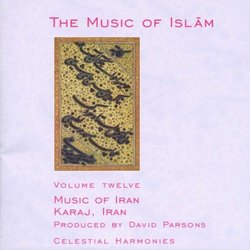Album DescriptionTen years in the making, The Music of Islam series recorded in Egypt, Morocco, Tunisia, Turkey, Yemen, Pakistan, Indonesia, Iran and Qatar represents the most comprehensive sound documentation available to Westerners today, of a world religion dating back to 1/622. Although governed by strict rules for fourteen centuries, contact with other cultures has radically affected Islamic music throughout history. As the world enters the XV/21st century the timing of this collection serves an even larger purpose, documenting the traditions that have survived and will continue to survive for centuries to come. Today, one fifth of the world's population, one billion people, are Muslims, occupying a large territory stretching from the Atlantic shore of north and west Africa, through west, central, and south Asia to island southeast Asia, and attracting an increasing following in India, western Europe, north America, east Asia, and southern Africa. This is a global presence which cannot be ignored.The instrumental compositions in this recording belong to Persian art music as passed down to the present. The marked preference of the Persians for instrumental music contributed to the dedication of greater attention by the Arabs, orientated more towards vocal music, to the development of instruments and instrumental performance.Gusheh-ha - designating small dimensioned tonal melodic tone groups - form the foundations of the great complex creations of the classical music of Iran. A gusheh (singular) is comprised of a dastgah - a kind of five-part suite. The connection with classical music is first established by the integration of all recordings in two very popular dastgah-ha (plural), Shur and Homayoun, also found in most regional music traditions.The instrumental compositions combining the kemenche and santur offer an excellent rendering of the feeling for sound or of the sound ideal of classical Persian music culture. They are accompanied in the rhythmical formation by the zarb or duff.


 Track Listings (11) - Disc #1
Track Listings (11) - Disc #1

